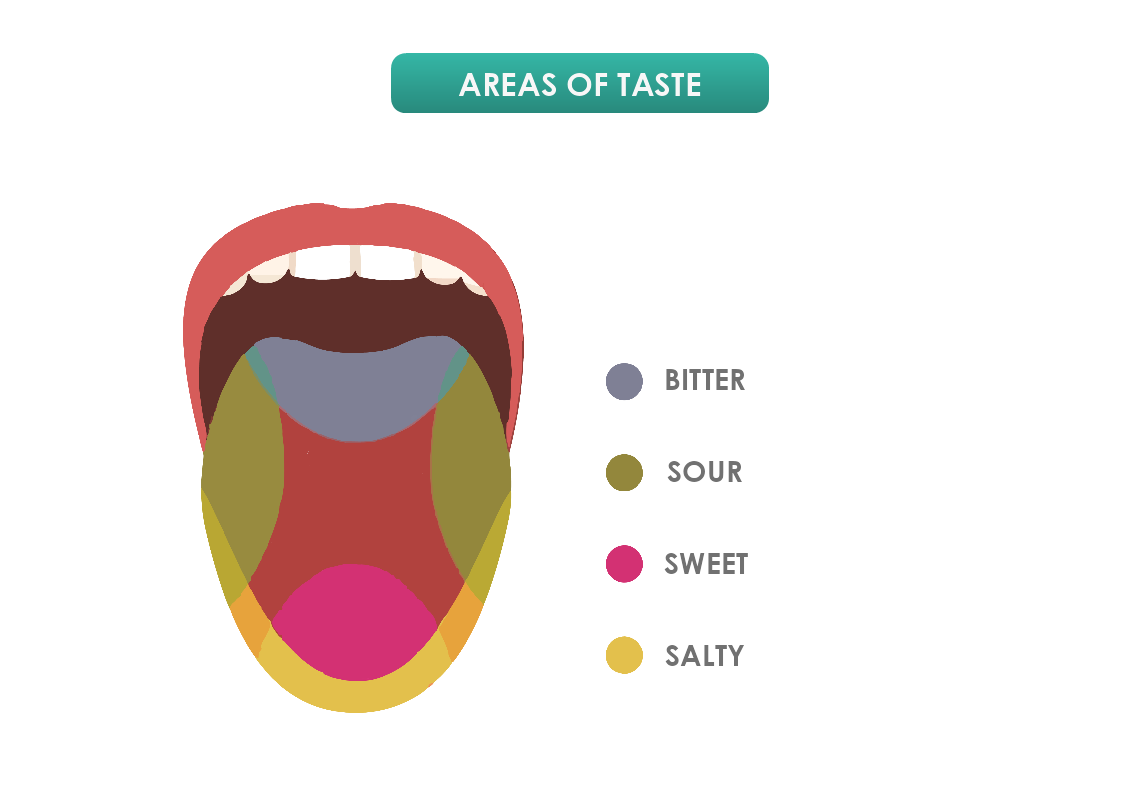This is an Areas of Taste template that can be used in a Biology lesson and to prepare a student for a midterm. The template displays the different parts of the tongue, as each is responsible for different basic tastes. The template is customizable with a few drags and drops in MyDraw.
Download Template:


Download Template:



What are the Areas of Taste?
There are several different areas of taste that people can experience. These include
- Sweet: a taste that is typically associated with sugary foods and drinks.
- Sour: a taste that is associated with acidic foods and drinks, such as lemons and vinegar.
- Salty: a taste that is associated with salt and salty foods, such as chips and pretzels.
- Bitter: a taste that is often associated with bitter foods and drinks, such as coffee and dark chocolate.
- Umami: a savory taste that is often associated with fermented and cured foods, such as soy sauce and Parmesan cheese.
These five tastes are thought to be the primary tastes that humans can detect, and they are often used to describe the flavors of different foods.
5 myths about the areas of taste
- Taste and flavor are the same.
- Our tongue is divided into tasting “zones.”
- Our taste buds are only on our tongues.
- There are 4 basic tastes we can perceive.
- The tongue map dates back to 1921 and was researched by a German scientist named D.P. Hanig.
Facts and Arguments about areas of taste
There are many different arguments and facts related to the perception of taste. Some key points to consider include:
Taste is mediated by specialized cells called taste buds, which are located in the mouth and on the tongue. These cells contain receptors that detect different types of taste stimuli, including sweet, sour, salty, bitter, and umami (savory).
The perception of taste is influenced by a variety of factors, including genetics, environment, and prior experience. For example, some people are more sensitive to certain tastes than others, and certain tastes may be more or less appealing depending on an individual's cultural background or personal preferences.
Taste is often closely tied to other senses, such as smell and touch. The perception of flavor, which is the combination of taste and smell, can be greatly affected by the presence or absence of certain odors.
Taste can also be influenced by emotions and psychological factors. For example, some people may find certain foods more or less appealing based on their associations with certain memories or emotions.
There is ongoing debate and research into the concept of "acquired taste," which refers to the idea that people can learn to enjoy tastes that they initially found unpleasant. Some scientists believe that this process is largely driven by exposure and conditioning, while others argue that it may involve more complex mechanisms such as changes in the brain's reward systems.
How to create a custom design for the Areas of Taste template in MyDraw?
- You can create your shape in a vector program and import/ insert it as a vector or raster image. The other option is to use MyDraw’s Basic shapes and connectors and make your custom shape.
- Once you are happy with the custom shape you could include it in your Library.
- Click on the textbook icon on the left side of the bar and choose “New Library”. Name the library and drag and drop the shape in it.
- Then right-click with the mouse on the Library tab and choose “Save as”.
- Choose the folder location on your computer and save it as a .nlb file.
- For future use, you could always add the newly created library to other diagrams.
- Once you have created your diagram/ template you can save the document in one of MyDraw’s native formats or export it in a preferred file format(PDF, SVG, EMF, VSDX, etc.).
- You can also export the document as a raster image.
